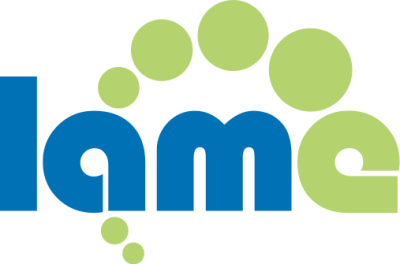- Qualcomm Launches Snapdragon 4 Gen 2 Mobile Platform
- AMD Launches Ryzen PRO 7000 Series Mobile & Desktop Platform
- Intel Launches Sleek Single-Slot Arc Pro A60 Workstation Graphics Card
- NVIDIA Announces Latest Ada Lovelace Additions: GeForce RTX 4060 Ti & RTX 4060
- Maxon Redshift With AMD Radeon GPU Rendering Support Now Available
Audio Archiving Guide: Part 1 – Music Formats

Have a large music collection just waiting to be archived? We’re here to help! In this three-part series, we’ll be tackling all there is to know about properly building your collection, from choosing the right codec, to ripping, to archiving. In this first article, we’ll take the frustration out of finding the perfect codec – one that fits your style, and needs.
Page 1 – Introduction
The world of digital audio can be a daunting one. While many perplexing challenges have been made more straight-forward over the years with the advent of better software and hardware that’s easier to understand, there are still far too many music lovers that don’t know about the precious digital music they have sitting on their hard drive.
There’s a lot to learn about the inner-workings of digital audio, and although these articles only scratch the surface of their technicality, reading them will hopefully set you on an illuminating path that will help you make better-informed choices in the future. After all, music will follow you for the rest of your life. If you want to keep your collection in pristine form, making the right choices now will save you a headache further down the road.
This is the first part of a three-part series of in-depth articles about digital audio, and how to rip, convert, or download them and organize in the most effective and convenient means possible. Upcoming articles in the series will go into more detail and technical explanation.
Common Audio Formats
For most non-critical listeners, downloadable MP3s – or for that matter – the default settings many media players carry when ripping CDs may be more than enough, but that’s part of the trick. In my experience with high-quality audio, one never knows how high their standards truly are until they experience high fidelity sound first-hand. There are other options available that may fit your needs and still provide an inconspicuous difference in sound quality when compared to the source.
The MP3 codec, arguably the most recognizable and widely-used audio format, was created by the Fraunhofer research organization in conjunction with other parties (as noted by Wikipedia) in 1991. Contrary to what many may surmise, the format is not free to use and requires a license from Fraunhofer to decode (play back) or encode (convert or create) an MP3 file, which is the primary concern for open source and electronic rights groups.
Although the format is so popular, enthusiastic listeners consider the traditional Fraunhofer encoder (which is used in most media playback software, such as Windows Media Player and iTunes) to be woefully inadequate. A popular alternative MP3 encoder, sardonically named “LAME,” has been coached to replace the traditional codec in many people’s collections.
In the audiophile circle, LAME is considered to boast largely improved audio quality over the vanilla MP3 codec, and it even competes well with other, more non-traditional ones as well. There is almost no technical limitation to the format in today’s world; older MP3 decoders had trouble playing them back or correctly displaying the track length on variable bit-rate files, but the issues have been all but eliminated.
There may be an outstanding issue with work flow, because ripping CDs or converting music files would usually be done with a separate piece of software unless the one you currently use supports it, which, of course, may or may not have an affect on you if you’re willing to switch or go between programs for better audio quality.

More recently, the AAC format (the designated successor to MP3) has begun, albeit slowly, to take hold of the market. Even though the codec may be most-known for its use in the iTunes music store, it is only used by Apple because it is a standards-compliant format that has digital rights management (DRM) control built-in. Like MP3, a license is required to encode or decode the format, but actual content can be distributed without a licensing fee from the standards groups.
iTunes is largely considered to have the best AAC encoder in terms of quality, but many choose not to use it because of the reliance to the program and Apple. Nero’s interpretation comes to a close second, but unlike iTunes, it is not free (update: see below) to use and must be purchased with one of their products. AAC is said to hold comparably better quality than MP3 at lower bitrates, but with competition such as the LAME codec, conclusions are hard to draw in active listening tests. Despite its advantages, it is not as distributed because of the overall lack of hardware and software support.
September 10th Addendum: Nero contacted us to confirm that the Nero AAC codec does in fact perform better at lower bitrates, using the HE-AAC switch with their encoder, because iTunes provides no such option. Their codec is currently a free download from their website.
The Windows Media Audio format has taken the second place in the audio popularity contest, mostly because of the active hardware and software support in the format’s heyday. Most of the press was promoted by Microsoft’s licensees, and much of the format’s success, similar to AAC, can be attributed to its dominance in online music sales and aggressive marketing.

While Microsoft previously stated that WMA had comparable quality to MP3 at half the bit-rate, most professionals agree that the statement is largely false. Though a WMA file encoded at 64 to 96 kbit/s, in its standard form, may be able to compete with the traditional Fraunhofer MP3 encoder, the real world benefits are considered negligible when paired against MP3 files at equally high bitrates.
As one might expect, there are other options available, but for the most part, the alternative formats have failed to capture the public’s eye. In the next section, we’ll be taking a look at these lesser known formats.
Support our efforts! With ad revenue at an all-time low for written websites, we're relying more than ever on reader support to help us continue putting so much effort into this type of content. You can support us by becoming a Patron, or by using our Amazon shopping affiliate links listed through our articles. Thanks for your support!




